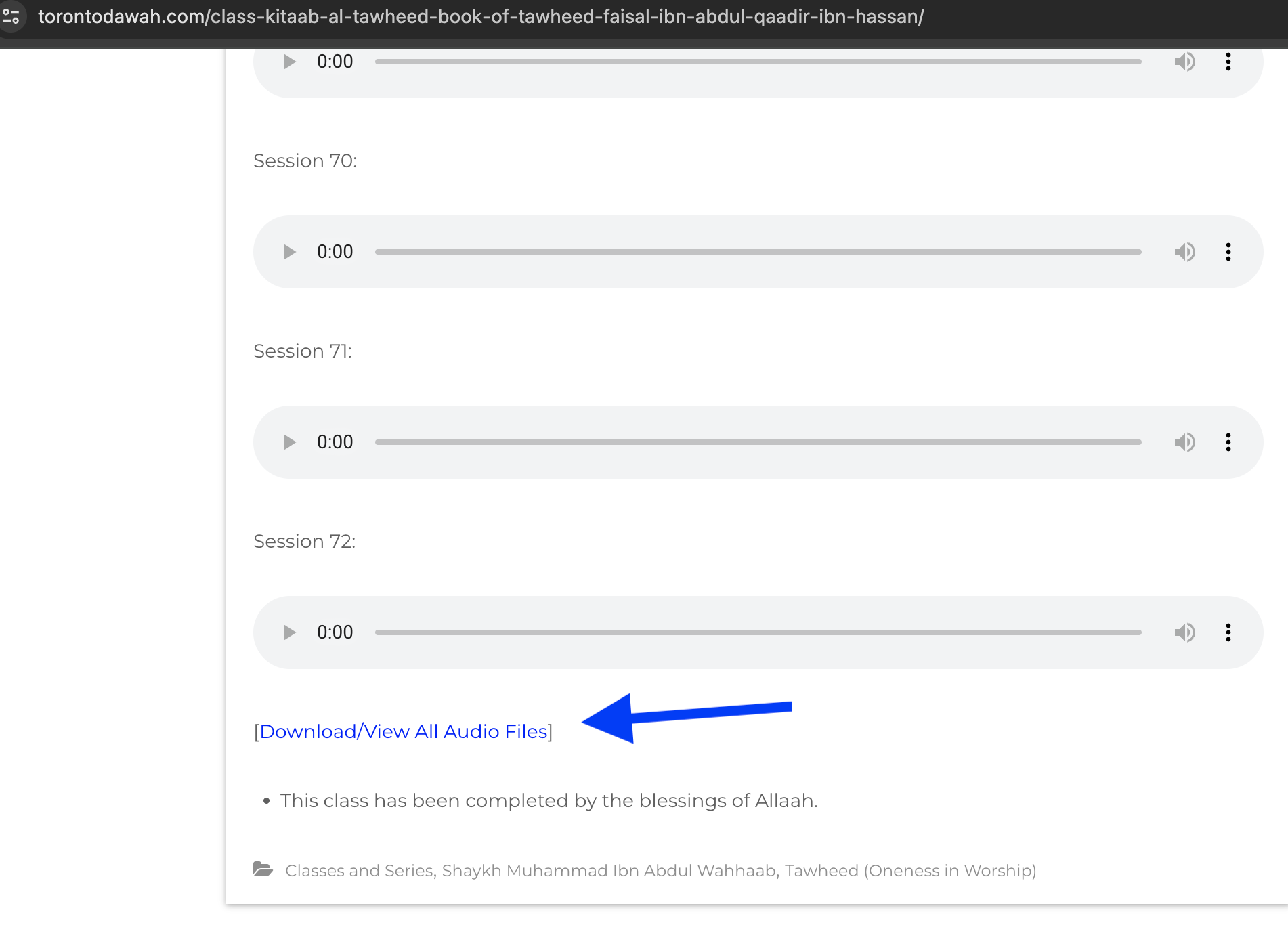Question:
Are there any exceptions for a woman’s clothing to not resemble a full jilbab, but for her to wear skirts and still remain covered with loose clothing (or possibly loose pants that do not show her shape)? Many families may see this as extreme and not approve of their daughters dressing in full jilbab and it may cause tension in the family if they think their daughter is too strict. Additionally, it may be difficult to adhere to a full jilbab in a school, university or work setting where this is not common. How can a woman overcome this struggle with society and her family as well, and is there any flexibility on this dress code in a western society?
Answer:
The term Hijab in al-Islam refers to the outer garment a woman wears outside her house and meets the following conditions found in the Qur’an and Sunnah:
- It should cover all the body
- It should not be an adornment in and of itself
- It should be thick and not transparent or “see-through”
- It should be loose, not tight such that it describes any part of the body
- It should not be perfumed with bakhoor or fragrance
- It should not resemble the clothing of men
- It should not resemble the dress of disbelieving women
- It should not be a garment of fame and vanity
[See: Hijaab al-Mar’ah al-Muslimah of Shaikh al-Albani pg. (54-67)]
With that being said, it not a condition that the Hijab be the Jilbaab that is worn in the Middle East. Rather, any outer garment that fulfills the above conditions counts as a Hijab. This was said by Shaikh al-Albani (d. 1420 H.), may Allah have mercy upon him,
“The command directed towards women, particularly with regard to wearing the jilbaab, is not an obligatory act of worship which has a meaning that we can’t comprehend. Rather, on the contrary, it does have a meaning we can understand. And the meaning that is derived from it, which we indicated previously, is to achieve the covering that a woman must abide by.
So if, for example, a woman wears two garments or she makes the jilbaab into two pieces – one upper piece and one lower piece – and both of these pieces fulfill the objective of the jilbaab which has been mentioned in the Qur’aan, at this point, even though we don’t refer to these two pieces as a jilbaab from a linguistic standpoint, we hold that it still fulfills the desired objective of the command to wear the jilbaab from a religious perspective”. End. [Silsilat-ul-Hudaa wan-Noor (tape no. 232) taken from the English translation entitled “The Jilbaab And What Garments Can Substitute It”]
A similar opinion was mentioned by Shaikh Ibn ul-‘Uthaymeen (d. 1421 H.) [See: Liqaat wa Fatawaa al-Aqiliyaat al-Muslimah (pg. 86)]
However, the scholars encourage and emphasize that women wear the Jilbaab because it is more concealing and therefore more in line with objective of the Hijab. There is an important principle that Shaikh Ibn ul-‘Uthaymeen (d. 1421 H.), may Allah have mercy upon him, mentioned in relation to the Hijab,
كلما كان لباس المرأة أستر كان أفضل
“The more concealing the clothing of a woman is, the better”. End [Reference]
With that being said, a woman’s Hijab has different examples that fulfill the conditions. From them include:
1. Jilbaab: which is the most concealing and best way for a women to cover herself. A Jilbaab is an outer garment a woman wears on top of her Khimaar and clothing. It extends from the top of the head until her feet. This type of covering is mentioned in the Qur’an [33:59] and worn by the Sahabiyaat (may Allah be pleased with them).
2. al-‘Abaa’ah (commonly called an Abayah): it is a one piece outer garment that starts at the shoulders and continues until the feet. A woman wears a Khimaar on top of it to cover her head and neck. Now many of the scholars have criticized this dress to be worn outside the house because although it covers the body, it displays the size of the woman’s body since it begins at the shoulders. However, in the situation a woman lives in an environment where it is difficult for women to wear the Jilbaab, some of the scholars permitted it provided it is spacious.
Shaikh Ibn ul-‘Uthaymeen (d. 1421 H.), may Allah have mercy upon him, said,
“[…]A woman wearing an ‘Abaa’ah on the shoulders along with covering her body, there is no harm in that. However, her remaining upon what she wore before is better. However, if the women in the society she is in wear the ‘Abaa’ah on the shoulder, there is no harm…”. End. [Fatawaa Nur ‘ala ad-Darb (no. 690)]
3. Two Pieces of Clothing: such as a long Khimaar over a wide and long skirt (floor length dress). This type of Hijab was mentioned by Shaikh al-Albani (d. 1420), may Allah have mercy upon him, in the post cited earlier. The Shaikh’s full fatwa can be found online.
In relation to wearing a skirt (floor length dress), Shaikh Salih al-Fawzaan (may Allah preserve him) said about it,
“What is desired from the Muslim woman is that she covers herself with clothing which covers her and is customary in her country. The clothing must also be wide and concealing such that nothing that is behind it can be seen, and that it be free from adornment when she is exiting from the house. The clothing must be free from adornment and be plain…”.
End.
It is important to note that the skirt that is mentioned is one that is spacious and floor length, not tight and short. It also must be worn with a long garment on top covering her upper body. A sister should be careful not to wear a tight, short skirt or a spacious, long skirt but without a long and spacious garment covering her body. If a woman is in doubt, it is important to always err on the side of caution and remember the principle Shaikh Ibn ul-‘Uthaymeen (d. 1421 H.), may Allah have mercy upon him, mentioned,
كلما كان لباس المرأة أستر كان أفضل
“The more concealing the clothing of a woman is; the better”. End. [Reference]
As for a woman wearing pants, then it is not permissible for a woman because it does not conceal the woman’s body, even if the pants are loose.
Shaikh Ibn ul-‘Uthaymeen (d. 1421 H.), may Allah have mercy upon him, said,
“Even if the pants are loose and wide, then they distinguish one leg from another [and this is that] which is not something concealing [of her body]”. End. [Majmoo’ Fatawaa wa Rasaail (12/286)]
For this reason, Shaikh Ibn ul-‘Uthaymeen (may Allah have mercy upon him) mentioned [Majmoo’ Fatawaa wa Rasaail (12/285)] that wearing of pants falls into the following Hadith,
عَنْ أَبِي هُرَيْرَةَ، قَالَ قَالَ رَسُولُ اللَّهِ صلى الله عليه وسلم “ صِنْفَانِ مِنْ أَهْلِ النَّارِ لَمْ أَرَهُمَا قَوْمٌ مَعَهُمْ سِيَاطٌ كَأَذْنَابِ الْبَقَرِ يَضْرِبُونَ بِهَا النَّاسَ وَنِسَاءٌ كَاسِيَاتٌ عَارِيَاتٌ مُمِيلاَتٌ مَائِلاَتٌ رُءُوسُهُنَّ كَأَسْنِمَةِ الْبُخْتِ الْمَائِلَةِ لاَ يَدْخُلْنَ الْجَنَّةَ وَلاَ يَجِدْنَ رِيحَهَا وَإِنَّ رِيحَهَا لَيُوجَدُ مِنْ مَسِيرَةِ كَذَا وَكَذَا
Abu Huraira reported Allah’s Messenger (ﷺ) having said this: Two are the types of the denizens of Hell whom I did not see: people having flogs like the tails of the ox with them and they would be beating people, and the women who would be dressed but appear to be naked, who would be inclined (to evil) and make their husbands incline towards it. Their heads would be like the humps of the bukht camel inclined to one side. They will not enter Paradise and they would not smell its odour whereas its odour would be smelt from such and such distance [Saheeh Muslim (no. 2128)]
In another fatwa, Shaikh Ibn ul-‘Uthaymeen (d. 1421 H.), may Allah have mercy upon him, was asked,
Question:
“Is wearing loose pants which do not show the shins with a long blouse on top of it which reaches halfway to the thighs or more, along with a Khimar covering the head considered the legislated Hijab for women? Or is the Hijab the well-known Jilbab and nothing else? We hope for some detail on the issue.”
Answer:
“That which I see is that it is not allowed for a woman to wear pants at all because this is from the clothing specific for men.
‘The Prophet (ﷺ) cursed the women who imitate men and vice versa’ [al-Bukhari (no. 5885)]
This is in relation to women who stop at the above-mentioned issue. Perhaps they may begin with pants which are loose and wide and do not show the size of the woman’s thighs, behind, nor [clothing] which shows her chest and breasts. However, women do not have a limit [in relation to clothing] and they will expand in relation to that. Perhaps a day will come when women will have pants which are made from a type of plastic that sticks to the body completely and resembles a person’s skin such that a woman walks with such pants as if she is completely naked! Even though this is far-fetched, however it is not impossible in relation to how women indulge in the issues relating to displaying their adornment. We ask Allah for safety and guidance”. End. [Liqaat wa Fatawaa al-Aqiliyaat al-Muslimah (pg. 154)]
With that being said, a Muslim woman should strive to adhere to wearing the Hijab that fulfills the conditions outlined above. In the situation she finds difficulty, then she should put her trust in Allah and strive to obey Him. If a woman cannot wear the Jilbaab, then she can wear the Hijab in a manner mentioned above. She should work diligently in educating herself and her family about the importance of the Hijab and gradually work to wearing that which is more concealing and pleasing to Allah. It is important also to remember that we are fortunate to live in an environment in which there is tolerance and acceptance. Just as many people are free to wear revealing and immodest clothing, women are free to wear modest and concealing clothing. That is not to say that there are no challenges and difficulties that a woman may experience while wearing the Hijab in western societies. A Muslim woman should always remember that any difficult she experiences in fulfilling the commandments of Allah will increase her reward based on the hadith of Aisha (may Allah be pleased with her) that the Prophet (ﷺ) said:
إنَّ لك من الأجرِ على قدرِ نصَبِك ونفقتِك
‘Verily for you is reward in accordance to the level of your hardship and the level of your spending’ [Saheeh Targheeb no. 1116 and it has an origin in al-Bukhari and Muslim]
Difficulties that may be experienced at the beginning will ultimately disappear and the reward and pleasure of Allah will remain. A person must always ask Allah to grant them strength and ability to adhere to His religion and renew their intentions. Be sincere and optimistic and Allah will open opportunities for you and the hearts of the people.
And Allah knows best
Faisal bin Abdul Qaadir bin Hassan
Abu Sulaymaan




